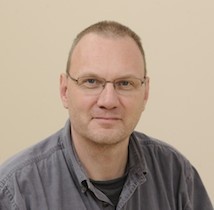Paul Linsdell
Professor

Email: paul.linsdell@dal.ca
Phone: 902-494-2265
Mailing Address:
4-E, Sir Charles Tupper Medical Building, 5850 College Street, Halifax, Nova Scotia, Canada, B3H 4R2
Research Topics:- Ion channel structure and function
Education
- BSc (University College London)
- PhD (University of Leicester)
- PDF (University of Washington)
- PDF (McGill University)
Research interests
Dr. Linsdell's lab is carrying out research to understand the structure and function of CFTR, the chloride channel that is mutated in cystic fibrosis. We are using electrophysiological recording techniques to study the detailed function of normal and mutant forms of the protein.
Selected publications
- Linsdell, P., Irving, C.L., and Cowley, E.A. (2022). Functionally additive fixed positive and negative charges in the CFTR channel pore control anion binding and conductance. Journal of Biological Chemistry 298, 101659.
- Linsdell, P., Irving, C.L., Cowley, E.A., and El Hiani, Y. (2021). Two positively charged amino acid side-chains in the inner vestibule of the CFTR channel pore play analogous roles in controlling anion binding and anion conductance. Cellular and Molecular Life Sciences 78, 5213-5223.
- Linsdell, P. (2021). On the relationship between anion binding and chloride conductance in the CFTR anion channel. Biochimica et Biophysica Acta 1863, 183558.
- Negoda, A., Hogan, M.S., Cowley, E.A., and Linsdell, P. (2019). Contribution of the eighth transmembrane segment to the function of the CFTR chloride channel pore. Cellular and Molecular Life Sciences 76, 2411-2423.
- Li, M.-S., Cowley, E.A., El Hiani, Y., and Linsdell, P. (2018). Functional organization of cytoplasmic portals controlling access to the cystic fibrosis transmembrane conductance regulator (CFTR) chloride channel pore. Journal of Biological Chemistry 293, 5649-5658.
- Linsdell, P. (2017). Architecture and functional properties of the CFTR channel pore. Cellular and Molecular Life Sciences 74, 67-83. [Review]
Techniques
- Site-directed mutagenesis
- Mammalian cell transfection
- Patch clamp electrophysiology (single channel and macroscopic current recording)
